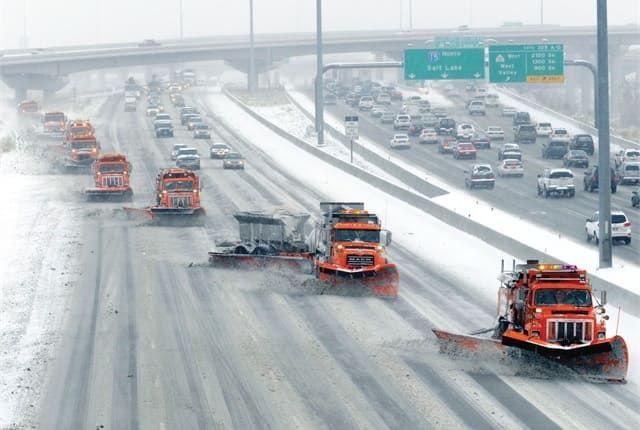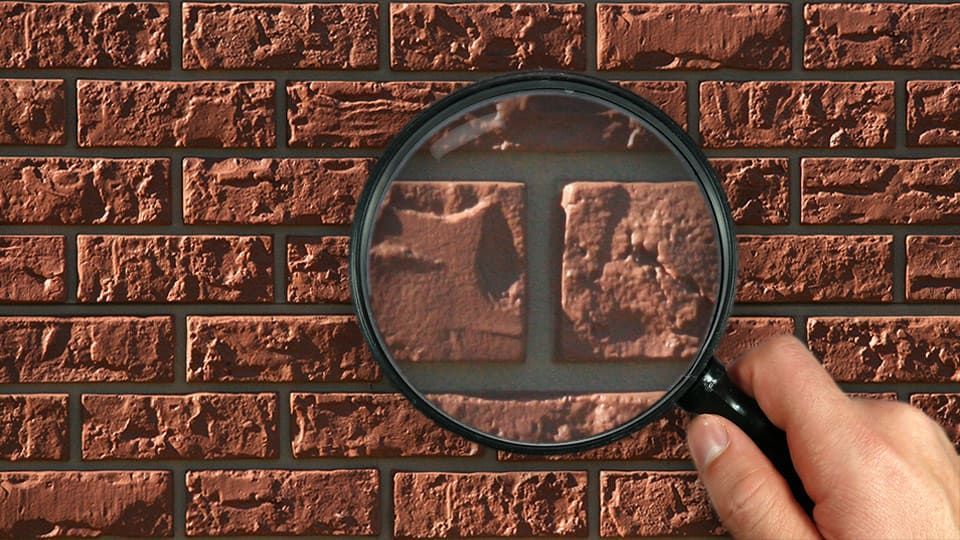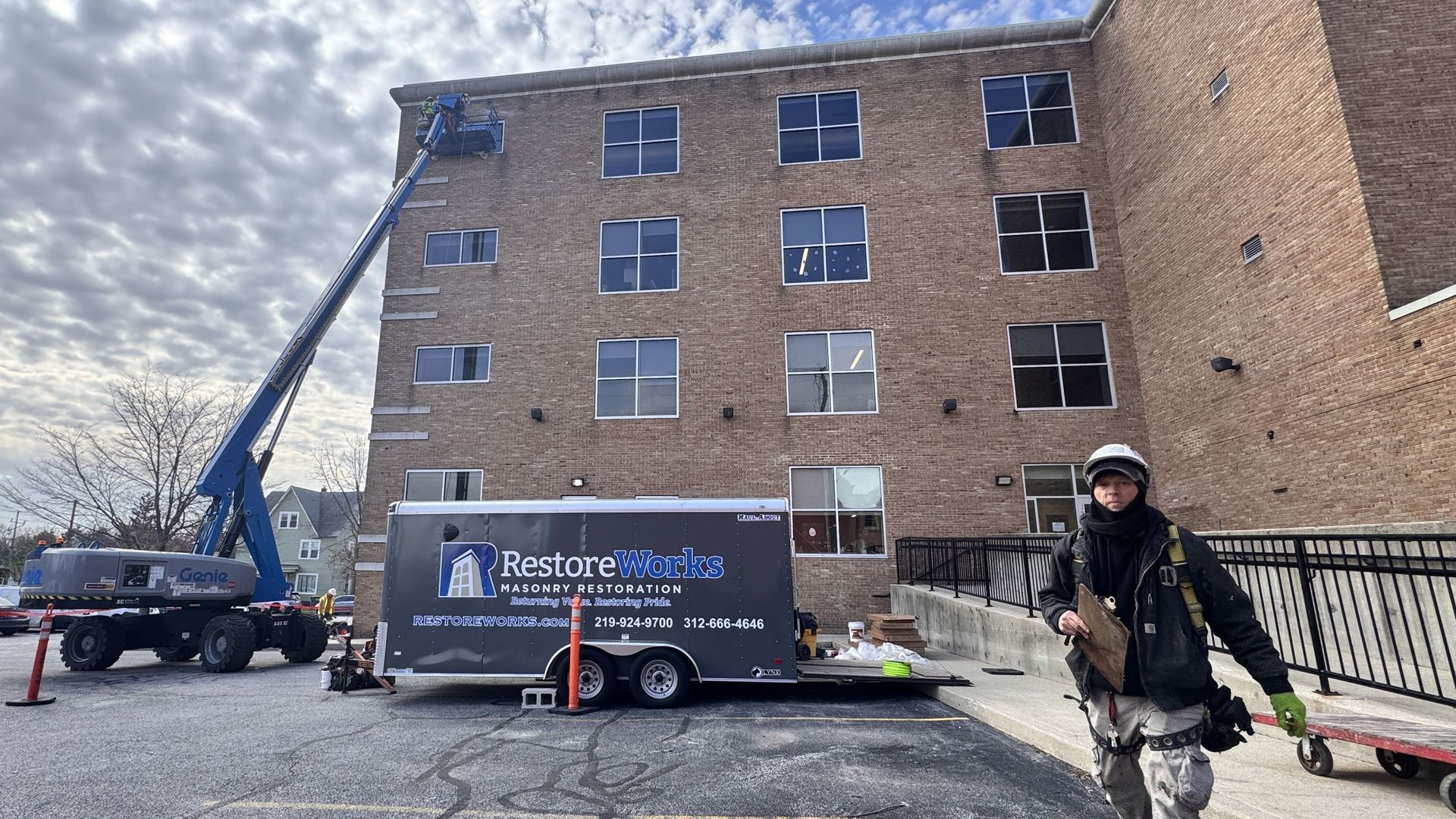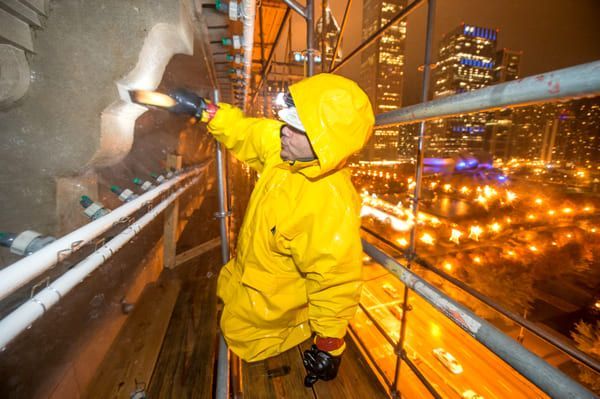Did you know that improper caulking can jeopardize the integrity of your commercial building? Quality caulking is essential for waterproofing, protecting against structural damage, and ensuring your building looks and performs at its best.
RestoreWorks is a professional masonry restoration and restorative cleaning company serving commercial clients across the greater Chicago area and beyond. With over 30 years of caulking and sealant repair experience, we’ve seen firsthand the impact of poor caulking and sealant application. From high-profile projects like the Chicago Navy Pier restoration to smaller-scale jobs like caulking the control joints at Calvary Academy’s gymnasium in South Holland, IL, our work ensures long-lasting protection and durability.
In this article, we’ll explore the most common caulking mistakes in commercial buildings—and how RestoreWorks can help you avoid them.
The Problem with Using the Wrong Caulking Materials
Not all caulking materials are created equal. Each type is engineered for specific applications or substrates. For example:
- Fireproof caulking is designed to withstand high temperatures and provide a fire-resistant barrier.
- Silicone caulking offers exceptional waterproofing and flexibility, making it ideal for areas exposed to moisture.
- Polyurethane caulking provides strong adhesion and is commonly used in masonry.
When the wrong type of caulking is used, it can lead to poor adhesion, reduced durability, and ultimately, failure of the seal. This mistake not only compromises the building’s structural integrity but can also affect its energy efficiency and aesthetic appeal.
At RestoreWorks, we ensure the proper sealant is used for every application. We consider factors like joint type, substrate material, and environmental conditions to select the ideal caulking material for long-lasting performance.
Why Surface Preparation is Critical
Proper surface preparation is the foundation of effective caulking. However, this step is often overlooked. Before applying new caulking, the surface must be:
- Cleaned thoroughly: Dust, dirt, grease, and old caulking must be removed to ensure proper adhesion.
- Smoothed and leveled: Uneven or rough surfaces can cause caulking to fail prematurely.
- Dry: Moisture trapped under caulking can lead to mold growth or poor bonding.
At RestoreWorks, we go beyond basic cleaning. We also confirm that joint dimensions—depth and width—are correct for the selected caulking material, ensuring a durable and effective seal.
Mistakes in Application Techniques
Even with the right material and preparation, improper application techniques can lead to failure. Common errors include:
- Uneven application: Creates air pockets that compromise the seal and trap moisture or dirt.
- Skipping manufacturer instructions: Caulking materials are designed to work best when applied under specific conditions and methods.
- Over-caulking or under-caulking: Using too much caulking can result in unsightly finishes, while too little may leave gaps that allow water and air infiltration.
Our team at RestoreWorks follows strict application standards to ensure a smooth, uniform finish that performs as intended. We also match the color and type of materials to seamlessly blend with your building’s aesthetics.
Ignoring Movement and Material Compatibility
Commercial buildings experience natural expansion and contraction due to temperature changes and environmental factors. Using caulking that doesn’t account for joint movement can lead to cracking or detachment. Similarly, caulking must be compatible with adjacent materials to ensure proper adhesion and long-term durability.
RestoreWorks carefully evaluates joint movement and material compatibility to select the best sealants for every job, ensuring flexibility and stability.
Neglecting Regular Maintenance
Neglecting regular maintenance is one of the most common mistakes property managers and building owners make. Over time, caulking degrades due to:
- UV radiation exposure
- Temperature fluctuations
- General wear and tear
Failing to address deteriorated caulking can result in water infiltration, structural damage, and poor indoor air quality. Routine building envelope inspections should be part of every building’s preventative maintenance plan.
RestoreWorks provides thorough inspections to identify problem areas and recommend repairs before minor issues become costly problems. With our professional caulking and sealant repair services, we help keep your building comfortable, energy-efficient, and structurally sound.
Skipping the Use of Backer Rods or Bond Breakers
Backer rods and bond breakers are essential components of proper caulking. They help control the depth of the sealant, promote flexibility, and ensure adhesion to the correct surfaces. Without these elements, caulking is more prone to failure due to improper joint dynamics.
RestoreWorks incorporates these tools into every application, ensuring a durable and effective seal.
Why Choose RestoreWorks for Your Caulking and Sealant Needs?
RestoreWorks is a trusted commercial caulking and sealant contractor. As a proud member of the Sealant, Waterproofing & Restoration Institute, we uphold the highest standards of excellence. Whether you need repairs for damaged caulking, replacement of aging seals, or a full building envelope inspection, we have the expertise to get the job done right.
Don’t let caulking mistakes compromise your building. Contact RestoreWorks today for professional caulking and sealant services to protect your investment and enhance its longevity.












